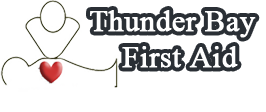Food safety should be very important to anyone – not just people who work in food service. Everybody handles food. You either prepare it for yourself or for other people, whether or not you just buy precooked food or cook it yourself. Unsafe handling practices causes food to become contaminated by pathogens or chemicals – dangerous substances that cause disease when ingested. This is why basic food safety training is a must.
Thunder Bay First Aid has different food safety programs available monthly, with the first being a basic course open to anyone interested in food safety. The second program is an advanced one for food business owners and managers. Both programs grants food safety credentials upon completion.
What Thunder Bay Offers Trainees
Food Handler Level 1 training runs for eight-hours over a single day (or two sessions over two days). It was initially targeted towards frontline food service workers (employees who handle food directly, e.g. servers and cooks) but is open to everyone with an interest in learning food safety. Basic concepts of food safety include sanitation and housekeeping, cooking and storage methods, foodborne illness, and personal hygiene.
Food Handler Level 2 is more advanced. The curriculum focuses on concepts of how to run a food business – e.g. health permits, employee training, general housekeeping. It is a long program, completed over 12 hours in two days.
We only require trainees to get 80 percent or better on the exam and to have complete attendance and we will award them with a Food Handler training certificate. Certificates lose their validity after five years (according to Canada’s federal legislations). Certified trainees need to sign up for food handler refreshers to renew their credentials. Thunder Bay First Aid also offers refreshers for food safety.
You can sign up for training during our office hours or, if you’re not available during that time, online. Food Handler training is only available once a month so sign up early; slots run out for both levels run out fast.
Learning About Hand Hygiene and Food Handling
Most of the time, the cause of contamination is poor hand hygiene of the handler. When the food handler doesn’t wash his or her hands properly, microorganisms can contaminate the food product, making it unsafe for public consumption. Similarly, if protective gear is required in the business/facility but isn’t worn, contamination becomes more likely.
Hand hygiene isn’t just washing a person’s hands with soap and water. It includes the use of gloves and hand rubbing with sanitizer. Proper hand hygiene is very important when handling food, especially between handling raw and cooked products, and between cleaning and cooking.
Introduction to Foodborne Illness
The problem that food handler training is trying to prevent is foodborne illness, a category for diseases caused by ingesting contaminated food. Diseases that are categorized an FBI have very similar symptoms – (1) nausea, (2) vomiting, (3) diarrhea, (4) loss of appetite, and (5) stomach cramps and/or pain. Typically most of these symptoms are present, if not all.
The top five microorganisms that cause FBIs are:
- Norovirus
- Campylobacter spp.
- Clostridium perfringens
- Salmonella (except S. typhi)
- Staphylococcus aureus
